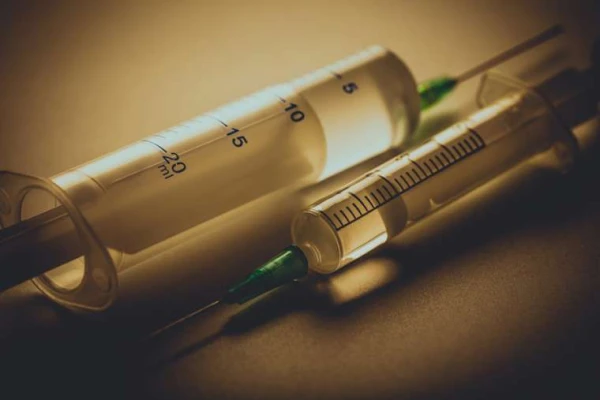
Washington D.C., Feb 25, 2019 / 12:09 pm (CNA).- While much of the opioid crisis of the last two decades has been associated with white Americans and prescription drugs, the number of African American fatalities from opioid overdoses is on the rise.
Mathew Kiang of Stanford University told NBC News that fentanyl-laced heroin on the East Coast is largely responsible for the rising opioid-related mortality in the African American population.
Drug smugglers lace heroin with fentanyl, creating a much more addictive – and lucrative – drug mixture, up to 50 times more potent than heroin alone. This phenomenon is particularly prevalent on the East Coast, where the most common form of heroin is a powder that can easily be mixed, as opposed to the black tar heroin more common on the West Coast. Street-level drug dealers are often unaware that the heroin they are selling has fentanyl mixed into it, NBC News reported.
Kiang is leading a four-person research team, which last week released a study in JAMA on opioid use across the country.
“Although opioid-related mortality has been stereotyped as a rural, low-income phenomenon concentrated among Appalachian or Midwestern states, it has spread rapidly, particularly among the eastern states,” the study found.
The result has been a spread of the opioid epidemic, from rural areas with largely white populations to urban areas with high black populations.
A previous study by Kiang and his colleagues found that the epidemic was largely fueled by prescription opioids given to treat chronic pain, which led people to eventually move on to heroin. That study, from earlier in 2018, found that the black community saw much lower opioid prescription rates than the white population, and had therefore not been hit as hard by the epidemic.
But over recent years, “rates of heroin use and prescription opioid misuse in blacks and whites have begun to converge,” Kiang’s team found. Their research determined that more than 350,000 Americans have died from “opioid-related causes” between 1999-2016.
Overdoses have also become the leading cause of death for Americans under age 50. Opioids are involved in over 60 percent of overdoses nationwide, the CDC noted, and opioid-related overdoses quadrupled between 1999 and 2015.
In October 2017, U.S. President Donald Trump declared the U.S. opioid crisis a public health emergency, calling federal government agencies to reallocate grants and focus resources on fighting the crisis though various avenues, including preventing drugs from entering the country and treatment for those with addictions.
Across the country, the Church has worked in recent years to respond to the opioid crisis at a local level.
In Vermont, parishes reach out to victims, but also their families, Bishop Christopher Coyne of Burlington, Vt. explained in a 2017 press conference.
“Oftentimes we are kind of limited in what we can do on a state level,” he acknowledged. “But at our parishes, and in our agencies in our parishes, we can continue to reach out to addicted families,” he noted, stressing, “not just those who are in recovery, but also their families.”
This also involves finding foster parents for children of addicted parents, particularly those whose parents have overdosed and those who suffer from Neonatal Abstinence Syndrome.
Ultimately, Catholics must “recognize that it’s not just the addicts; it’s the whole family that suffers,” he continued.
Catholic Charities in the Galveston-Houston archdiocese is “already on to this question,” Cardinal Daniel DiNardo said at the U.S. bishops’ 2017 spring meeting, and is providing “the kinds of charity and help and counseling for them and their families that Catholic Charities by its professional expertise brings.”
Bishop Edward Malesic of Greensburg, Pa. published a pastoral letter on the opioid crisis in June 2017. In his diocese in Western Pennsylvania, over 300 opioid-related deaths had ravaged the communities in the previous year.
In his “Pastoral Letter on the Drug Abuse Crisis from Death and Despair to Life and Hope,” Bishop Malesic called the crisis “a plague that has come into the homes and families of every city, town, and even the rural areas of our diocese.”
He stressed the need for Christian hope in God’s providence, and called on Catholics to reach out and prayerfully accompany those struggling with addiction.
The bishop also announced initiatives the diocese was taking to respond to the crisis, including educational initiatives at the parish level and developing family recovery groups.
In March 2016, Massachusetts bishops also issued a statement in response to the state’s rising drug-overdose crisis, after the rate of overdose deaths had reached record levels there.
“We encourage our sisters and brothers who are suffering addiction or the addiction of loved ones to turn to their faith community for support, counsel and compassion, and we pray that those most affected will receive the physical, emotional and spiritual help that they need,” the state’s bishops said.
Last year, Catholic Charities received a nearly $1 million grant to treat opioid addiction in the rural New York counties of Orange, Sullivan and Ulster, about 70 miles mother of New York City. Many people in the area have few means of transpiration and are unable to access treatment.
If you value the news and views Catholic World Report provides, please consider donating to support our efforts. Your contribution will help us continue to make CWR available to all readers worldwide for free, without a subscription. Thank you for your generosity!
Click here for more information on donating to CWR. Click here to sign up for our newsletter.





Leave a Reply